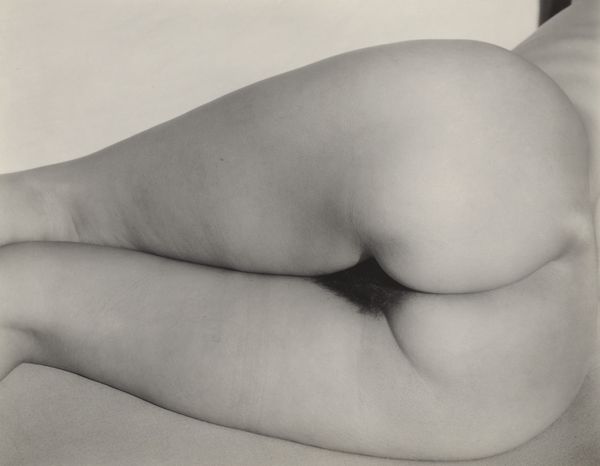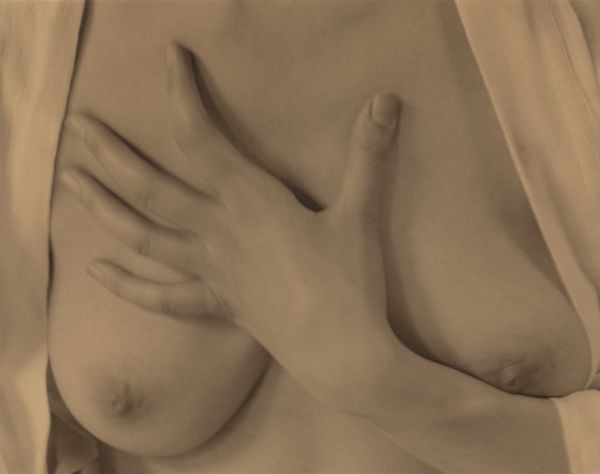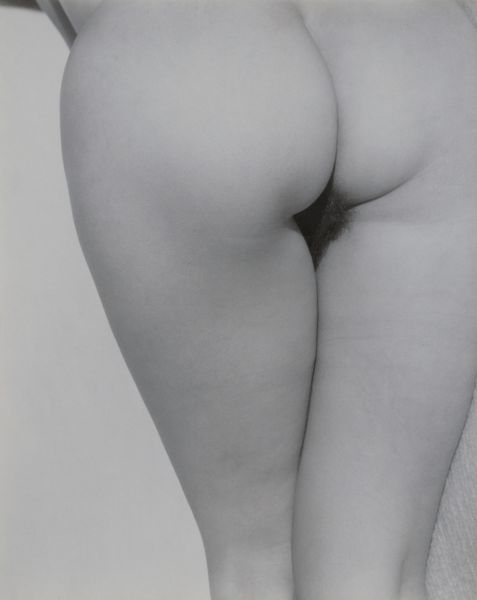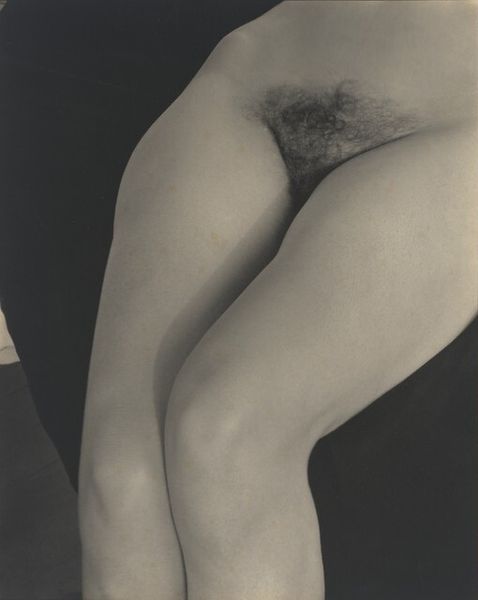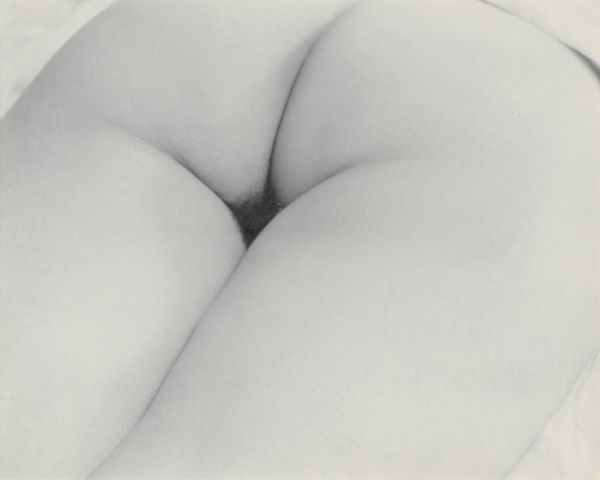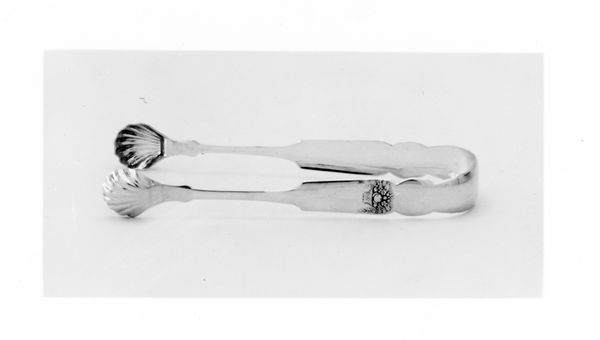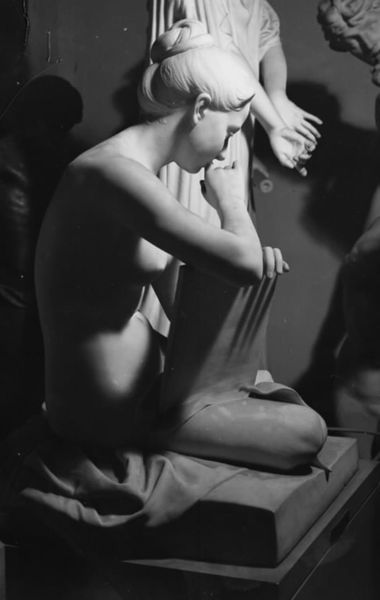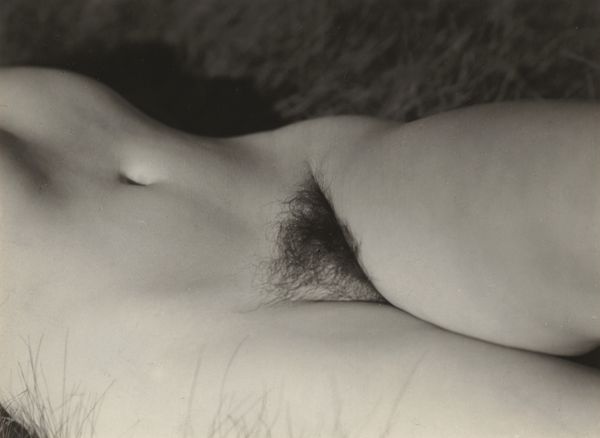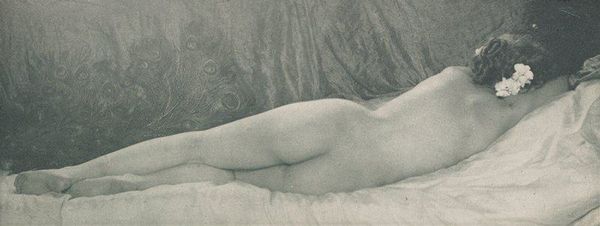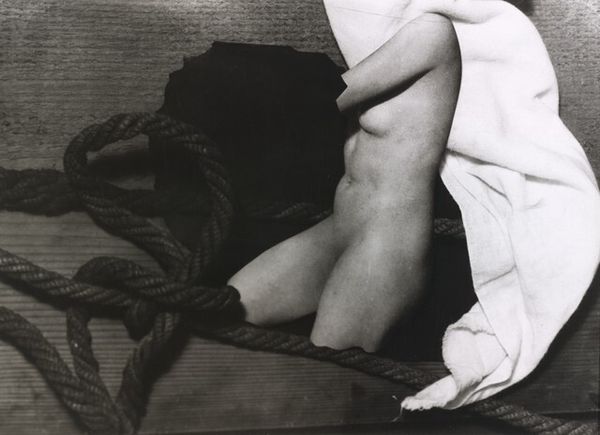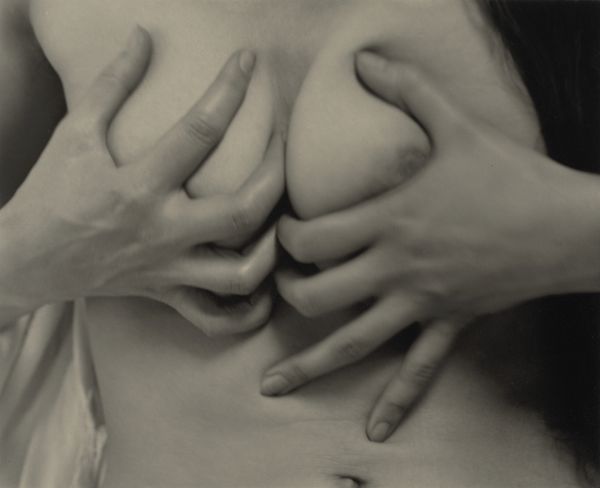
photography, gelatin-silver-print
#
portrait
#
white backdrop
#
figure photograph
#
ethereal
#
sculptural image
#
blurred
#
toned
#
photography
#
gelatin-silver-print
#
charcoal
#
nude
#
modernism
#
erotic-art
Dimensions: sheet (trimmed to image): 18.2 x 23.4 cm (7 3/16 x 9 3/16 in.) mount: 37.8 x 50.9 cm (14 7/8 x 20 1/16 in.)
Copyright: National Gallery of Art: CC0 1.0
Editor: This is a gelatin silver print photograph called "Georgia O'Keeffe—Torso" created in 1931 by Alfred Stieglitz. It's a close-up of a nude torso, focusing on soft curves and shadows. The lighting is very dramatic, creating almost an abstract landscape out of the human form. It’s very intimate, wouldn’t you say? What are your initial thoughts? Curator: Intimacy is a good word. Given Stieglitz’s and O’Keeffe’s relationship, the power dynamics at play become quite prominent here. Think about the male gaze, particularly within the context of early 20th century art. How did depictions of women often serve male desires and perspectives? Editor: Right, so Stieglitz, as a prominent figure in the art world and O'Keeffe's husband, wielded significant influence in shaping her public image, especially through these nudes. Curator: Precisely. This photo and the many others Stieglitz took of O’Keeffe arguably constructed a persona for her – an “artist muse.” He displayed these works publicly, sometimes without her explicit consent. Consider the ethical implications of exhibiting someone's likeness, particularly nude portraits, within the institutional framework of a gallery or museum. Editor: That makes you think about her own artistic agency… Was she complicit in crafting this image, or was she more of a subject, controlled by Stieglitz's vision? Curator: It’s complex. O'Keeffe certainly had her own agency, and she used the press herself later on. However, initially, Stieglitz very much framed her narrative. How did this kind of exposure impact her career, and how was it received by critics and the public at the time? The image helped to build the myth around her. Editor: This highlights how deeply intertwined personal relationships, power dynamics, and institutional structures are within the history of art and the art world, and that the myth of the artwork lives within culture. Curator: Absolutely. And it challenges us to critically examine the narratives we build around artists, and how those narratives are shaped by social and political forces.
Comments
No comments
Be the first to comment and join the conversation on the ultimate creative platform.
